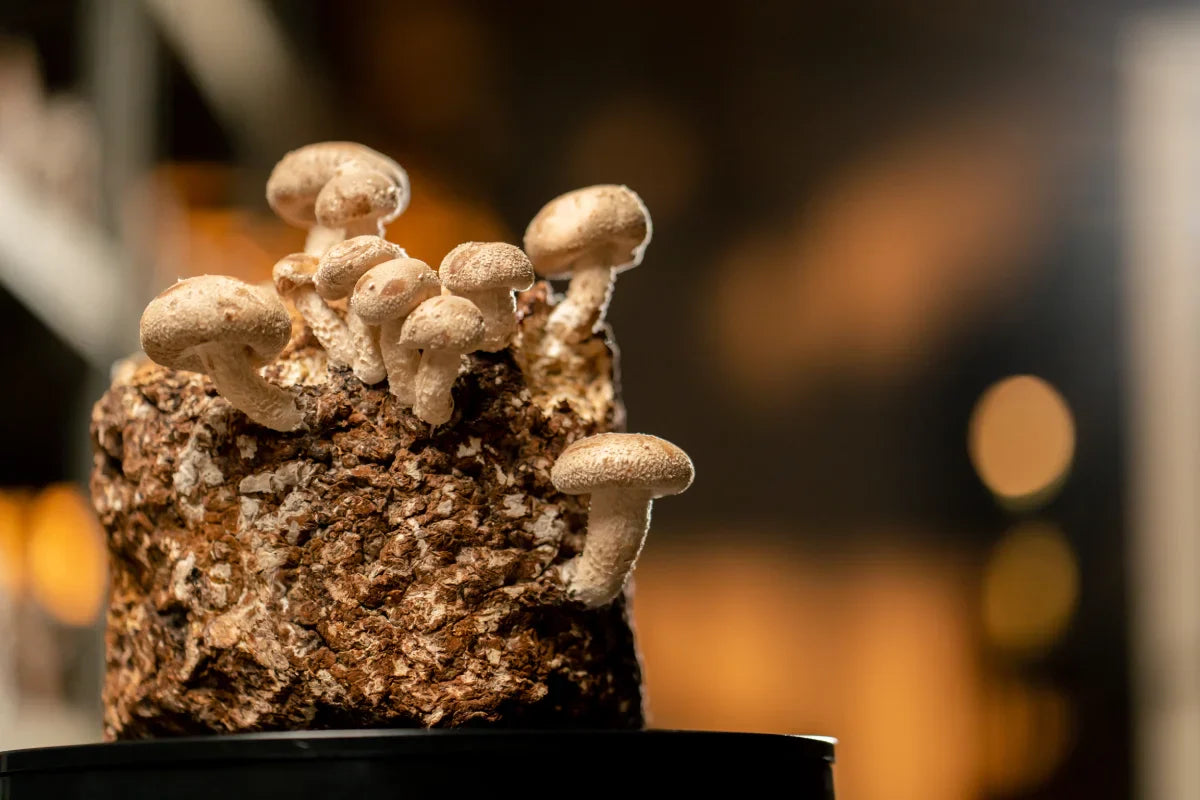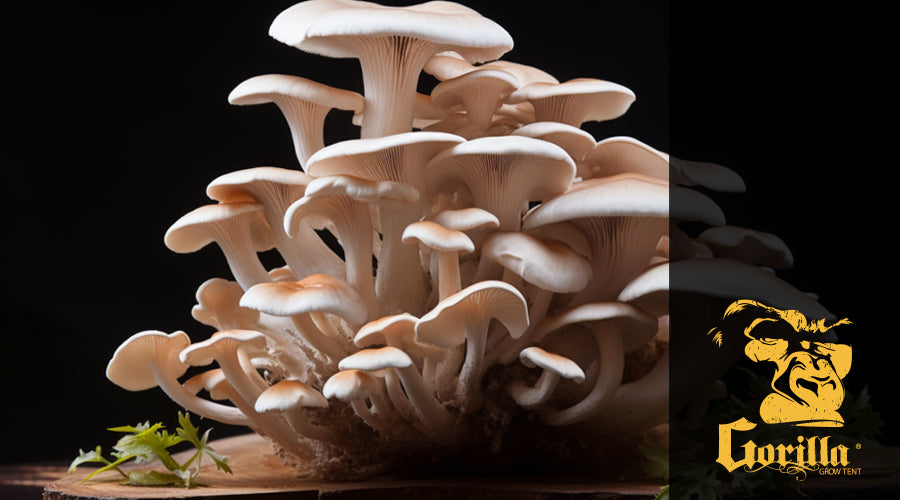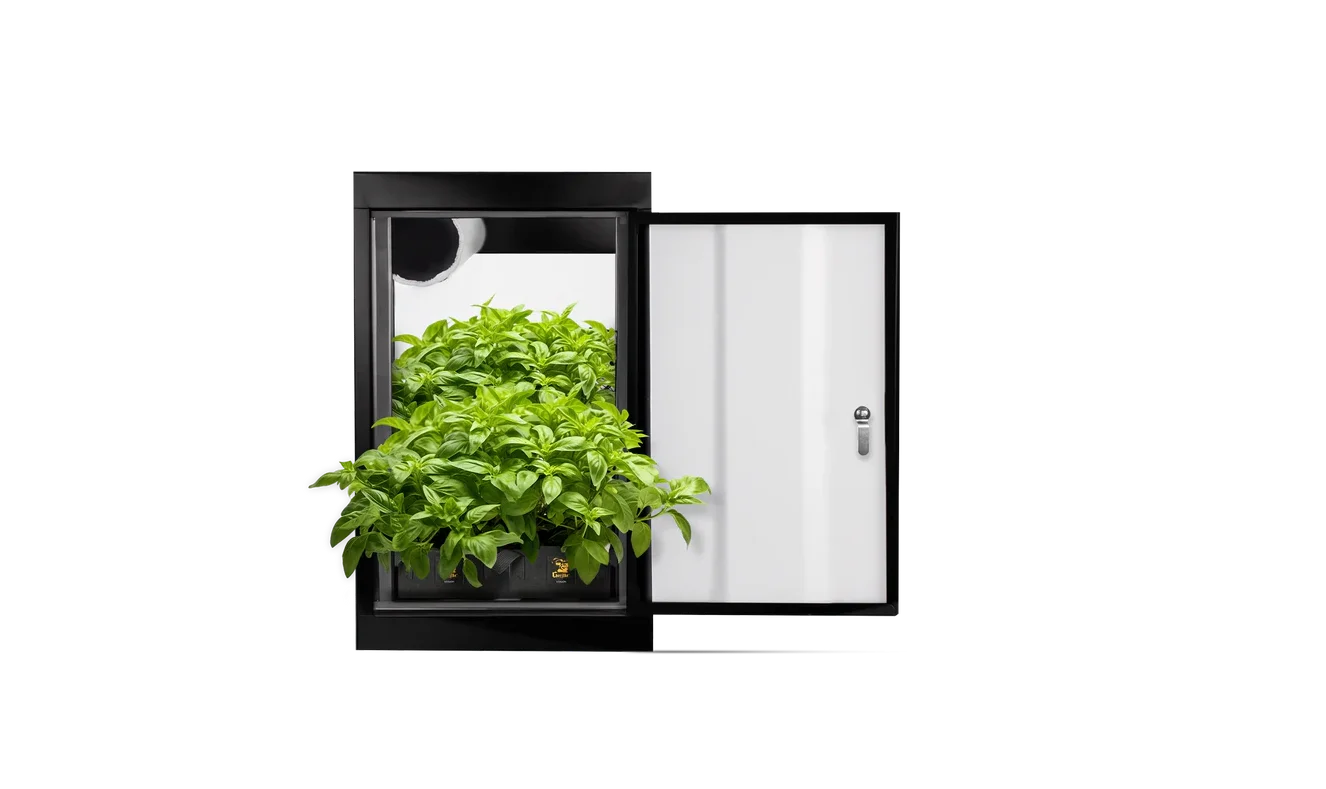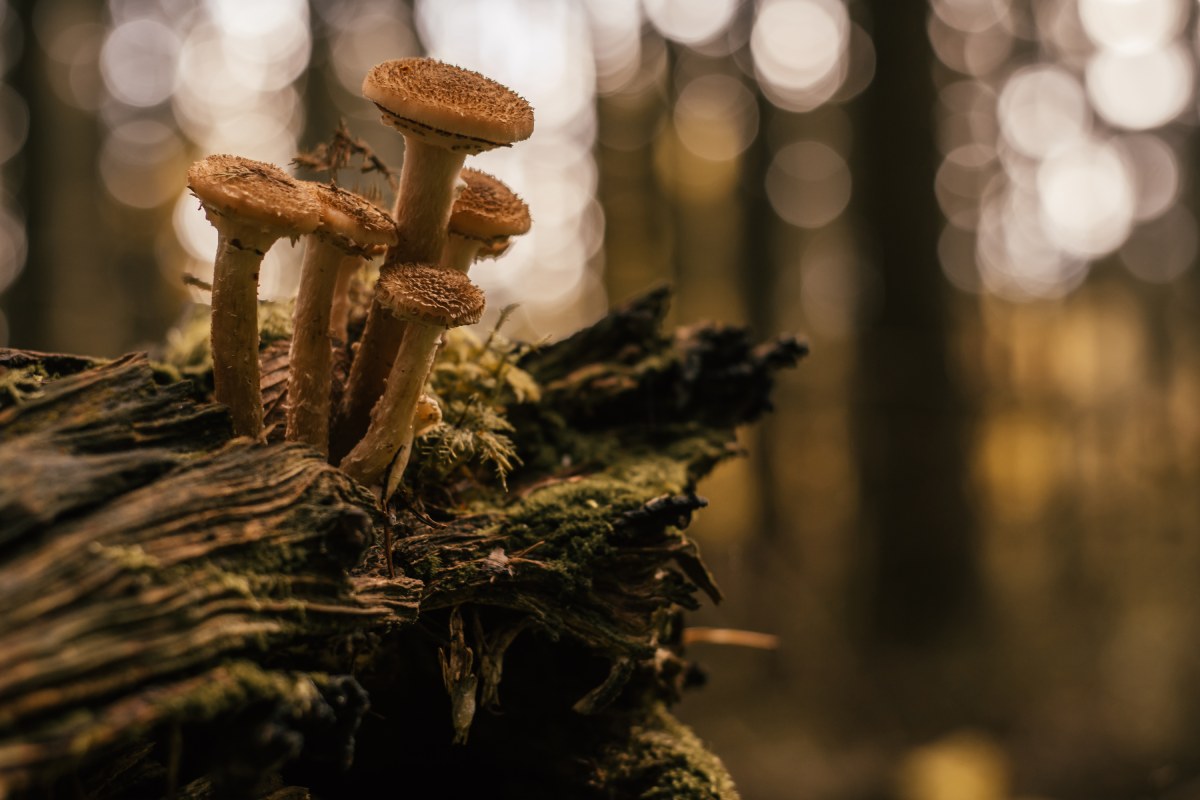
How to Grow Mushrooms: Your Complete Guide to Indoor Mushroom Cultivation
Quick Answer: Growing mushrooms at home requires a controlled environment with 80-95% humidity, temperatures between 55-75°F, and minimal light. Start with beginner-friendly varieties like oyster mushrooms using grow kits or prepared substrates. Expect your first harvest in 2-4 weeks with proper setup and care.
Growing your own gourmet mushrooms at home has never been more accessible or rewarding. With the right knowledge, equipment, and techniques, you can produce fresh, flavorful mushrooms year-round in a controlled indoor environment. Whether you're interested in cultivating oyster mushrooms, shiitake, or other gourmet varieties, this comprehensive guide will walk you through everything you need to know.
From selecting the best mushroom varieties for beginners to setting up optimal growing conditions, you'll discover how to create a thriving mushroom cultivation system that delivers consistent harvests of premium-quality fungi.
Why Grow Mushrooms at Home? The Benefits of Indoor Cultivation
Home mushroom cultivation offers numerous advantages over purchasing store-bought mushrooms, making it an increasingly popular hobby among indoor gardening enthusiasts.
Fresh, Gourmet Quality at Your Fingertips Home-grown mushrooms are significantly fresher than store-bought varieties, which often lose flavor and texture during transport and storage. You can harvest at peak ripeness and enjoy superior taste, texture, and nutritional value that commercial mushrooms simply can't match.
Year-Round Production Capability Unlike seasonal outdoor foraging, indoor mushroom cultivation provides consistent harvests throughout the year. A properly maintained mushroom growing system can produce multiple flushes every few weeks, ensuring a steady supply of fresh fungi regardless of weather conditions.
Cost-Effective and Sustainable After initial setup costs, growing mushrooms becomes highly economical. A single inoculation can produce multiple harvests over several months, making homegrown mushrooms far more affordable than purchasing premium gourmet varieties from specialty stores.
Complete Control Over Growing Conditions Indoor cultivation eliminates concerns about contamination, pesticides, or environmental pollutants. You control every aspect of the growing process, ensuring the highest quality and safety standards for your mushroom harvest.

Best Mushroom Varieties for Beginning Growers
Selecting the right mushroom species is crucial for cultivation success. Some varieties are much more forgiving and productive than others, especially for new growers.
Oyster Mushrooms - The Perfect Beginner Choice Oyster mushrooms (Pleurotus species) are the ideal starting point for new mushroom cultivators. They grow rapidly, tolerate a wide range of conditions, and produce abundant yields. Available in multiple colors including white, pink, yellow, and blue, oyster mushrooms offer excellent flavor and versatility in cooking.
These mushrooms thrive in temperatures between 55-75°F with high humidity (85-95%) and grow on various substrates including straw, coffee grounds, and commercial growing mediums. First harvests typically appear within 1-2 weeks of setup.
Shiitake Mushrooms - Premium Gourmet Option Shiitake mushrooms command high market prices and offer exceptional culinary value. While requiring slightly more attention than oyster mushrooms, shiitakes are still suitable for dedicated beginners. They prefer temperatures around 55-75°F and take 2-4 weeks to fruit.
Shiitakes grow best on hardwood substrates and produce multiple flushes over several months. Their rich, umami flavor and meaty texture make them highly sought after by gourmet cooks.
Lion's Mane - Unique and Medicinal Lion's mane mushrooms offer both culinary and potential health benefits. These distinctive white, shaggy mushrooms have a texture similar to seafood and are prized for their potential cognitive benefits. They require similar conditions to oyster mushrooms but grow more slowly.
Wine Cap Mushrooms - Hardy and Productive Wine cap mushrooms (Stropharia rugosoannulata) are extremely hardy and grow well on wood chips and organic matter. They're excellent for beginners due to their resilience and ability to grow in less-than-perfect conditions.
Essential Equipment for Mushroom Growing Success
Creating the optimal environment for mushroom cultivation requires specific equipment designed to maintain precise environmental conditions. Professional-grade equipment ensures consistent results and higher yields.
Grow Tents - The Foundation of Controlled Cultivation Gorilla mushroom grow tents provide the ideal controlled environment for mushroom cultivation. The thick 1680D canvas material maintains consistent temperature and humidity while the adjustable height design accommodates different growing setups.
These specialized tents feature water-resistant flooring, multiple ventilation ports, and easy-access doors that minimize contamination risk. The enclosed environment allows precise control over all environmental factors crucial for mushroom development.
Humidity Control Systems Mushrooms require extremely high humidity levels (80-95%) that are difficult to maintain in open environments. Professional humidity controllers, ultrasonic humidifiers, and misting systems ensure optimal moisture conditions throughout the growing cycle.
Temperature Monitoring and Control Precise temperature control is essential for successful mushroom cultivation. GXi temperature and humidity sensors provide real-time monitoring with laboratory-grade accuracy, while heating and cooling systems maintain optimal temperatures for different mushroom species.
Ventilation and Air Circulation Fresh air exchange prevents carbon dioxide buildup and reduces contamination risk. Small fans, air pumps, and ventilation systems ensure proper airflow while maintaining humidity levels. The goal is gentle air movement without creating drafts that could dry out growing mushrooms.
Lighting Requirements While mushrooms don't require intense lighting like plants, they do need some light to trigger proper fruiting and cap development. LED grow lights provide ideal spectrum and intensity without generating excessive heat that could disrupt growing conditions.

Step-by-Step Mushroom Growing Process
Successful mushroom cultivation follows a systematic process that can be broken down into manageable phases. Following these steps ensures optimal conditions and maximum yields.
Phase 1: Substrate Preparation The substrate (growing medium) provides nutrition for mushroom development. Different mushroom types prefer different substrates:
- Oyster mushrooms: Straw, coffee grounds, or commercial pellets
- Shiitake: Hardwood sawdust or logs
- Lion's mane: Hardwood sawdust or commercial blocks
Sterilize substrates to eliminate competing microorganisms that could prevent mushroom growth. This can be done through steam sterilization, pressure cooking, or purchasing pre-sterilized materials.
Phase 2: Inoculation Introduce mushroom spawn (mycelium-inoculated material) to your prepared substrate. This process should be done in the cleanest possible environment to prevent contamination. Many beginners start with ready-to-fruit blocks that skip this step entirely.
Mix spawn thoroughly with substrate and place in growing containers. The mycelium will gradually colonize the substrate over 1-4 weeks, depending on species and conditions.
Phase 3: Incubation During incubation, maintain optimal temperature and humidity for mycelium growth. Keep containers in a dark, warm environment (70-80°F for most species) with moderate humidity (70-80%). This phase typically lasts 2-6 weeks until the substrate is fully colonized.
Phase 4: Fruiting Initiation Once the substrate is fully colonized, trigger fruiting by adjusting environmental conditions:
- Increase humidity to 85-95%
- Provide gentle indirect lighting 12 hours daily
- Lower temperature slightly (species-dependent)
- Increase fresh air exchange
Small mushroom pins (baby mushrooms) should appear within 3-10 days of initiating fruiting conditions.
Phase 5: Growth and Harvesting Mushrooms develop rapidly once pinning begins. Maintain high humidity and continue gentle air circulation. Harvest mushrooms when caps are fully formed but before spores are released (usually when gills are visible but not yet dropping spores).
Use clean tools to cut mushrooms at the base, leaving the mycelium intact for additional flushes.
Creating Optimal Growing Conditions
Environmental control is the key to successful mushroom cultivation. Each factor must be carefully managed and monitored throughout the growing cycle.
Temperature Management Different mushroom species have specific temperature requirements:
- Oyster mushrooms: 55-75°F (optimal at 65°F)
- Shiitake: 55-75°F (optimal at 60-65°F)
- Lion's mane: 65-75°F (optimal at 70°F)
Maintain consistent temperatures using environmental control systems that integrate heating, cooling, and monitoring capabilities.
Humidity Control Strategies High humidity is absolutely critical for mushroom development. Methods for maintaining optimal humidity include:
- Ultrasonic humidifiers for consistent moisture delivery
- Misting systems for automated humidity control
- Humidity tents or chambers for small-scale growing
- Water trays and wet towels for passive humidity
Monitor humidity levels continuously using calibrated hygrometers and adjust as needed throughout the growing cycle.
Air Quality and Circulation Fresh air exchange removes excess carbon dioxide while preventing stagnant conditions that promote mold growth. Aim for:
- Gentle air movement without direct drafts
- Complete air exchange 4-6 times daily
- Filtered incoming air to prevent contamination
- Consistent circulation without drying mushrooms
Lighting Considerations Mushrooms need minimal light compared to plants, but proper lighting triggers healthy fruiting:
- 12-16 hours of gentle indirect light daily
- Cool white LED lights (5000K-6500K spectrum)
- Avoid intense or direct lighting that can dry mushrooms
- Use timers for consistent light cycles

Advanced Growing Techniques and Optimization
Once you've mastered basic mushroom cultivation, advanced techniques can significantly increase yields and improve quality while expanding the variety of mushrooms you can grow.
Multi-Species Cultivation Systems Growing different mushroom varieties simultaneously maximizes production diversity and provides continuous harvests. Create separate zones within your grow tent system with species-specific environmental controls.
Different mushrooms can be grown on various substrates and harvest schedules, ensuring fresh mushrooms year-round. This approach also provides backup if one variety encounters problems.
Substrate Optimization and Recycling Advanced growers often create custom substrate blends optimized for specific mushroom types. Adding supplements like bran, gypsum, or lime can improve yields and mushroom quality.
Spent mushroom substrate can be composted or used as soil amendment, creating a sustainable growing cycle that minimizes waste while improving garden soil.
Automated Environmental Control Professional mushroom cultivation benefits from automated systems that maintain optimal conditions without constant monitoring. GXi ecosystem technology enables precise environmental control with smartphone monitoring and alerts.
Automated systems can adjust humidity, temperature, and air exchange based on real-time conditions, ensuring optimal growing environments even when you're away.
Scaling Production As your skills develop, you can scale up production using larger grow tents, multiple growing chambers, or commercial-style growing systems. Complete grow tent kits provide everything needed for expanded mushroom cultivation operations.
Common Challenges and Troubleshooting Solutions
Even experienced mushroom growers encounter challenges. Understanding common problems and their solutions prevents crop failures and optimizes production.
Contamination Issues Symptoms: Green, black, or fuzzy mold growth competing with mushrooms Causes: Poor sterilization, contaminated materials, or inadequate air filtration Solutions: Implement strict sanitation protocols, use sterile techniques, improve air filtration, and maintain proper environmental conditions
Poor or No Mushroom Development Symptoms: Mycelium grows but no mushrooms form Causes: Insufficient humidity, incorrect temperature, poor air quality, or inadequate lighting Solutions: Increase humidity to 90-95%, adjust temperature to species requirements, improve fresh air exchange, and provide gentle indirect lighting
Small or Deformed Mushrooms Symptoms: Mushrooms develop poorly or have abnormal shapes Causes: Inconsistent environmental conditions, overcrowding, or nutrient deficiencies Solutions: Maintain stable conditions, thin mushroom clusters, and ensure adequate substrate nutrition
Rapid Moisture Loss Symptoms: Mushrooms dry out quickly or growing environment loses humidity rapidly Solutions: Improve tent sealing, increase humidifier capacity, reduce air exchange rate, and add moisture retention methods
Harvesting and Maximizing Mushroom Production
Proper harvesting techniques and production optimization ensure continuous yields with maximum quality and flavor.
Optimal Harvest Timing Harvest mushrooms at peak quality for best flavor and storage life:
- Oyster mushrooms: When caps are fully formed but still slightly cupped
- Shiitake: Just as caps begin to flatten and before gills are fully exposed
- Lion's mane: When spines are white and full but before yellowing begins
Morning harvesting typically provides the best quality and longest storage life for fresh mushrooms.
Harvesting Techniques Use clean, sharp tools to cut mushrooms at the base rather than pulling them. This prevents damage to the mycelium and allows for additional flushes. Harvest entire clusters at once for oyster mushrooms, but individual mushrooms can be taken for other species.
Multiple Flush Management Most mushroom substrates produce 2-4 flushes over several months. After each harvest, allow the substrate to rest for 1-2 weeks with reduced humidity before initiating the next fruiting cycle. This maximizes total production from each substrate preparation.
Production Optimization Strategies
- Maintain detailed records of conditions and yields for each growing cycle
- Experiment with different substrates and supplements
- Monitor environmental conditions continuously using professional sensors
- Rotate growing schedules for continuous harvests
FAQ Section
How long does it take to grow mushrooms from start to finish? The timeline varies by species: oyster mushrooms can be ready in 1-2 weeks from fruiting initiation, while shiitake may take 2-4 weeks. Including colonization time, expect 3-8 weeks total from inoculation to harvest.
What's the easiest mushroom for beginners to grow? Oyster mushrooms are the best choice for beginners due to their rapid growth, wide temperature tolerance, and high contamination resistance. They're forgiving of minor environmental fluctuations and produce abundant yields.
Do I need special equipment to grow mushrooms at home? While you can start with basic materials, a proper grow tent with humidity and temperature control significantly improves success rates and yields. Professional equipment eliminates guesswork and provides consistent results.
How much space do I need for mushroom growing? A 2x2 or 3x3 grow tent provides adequate space for home mushroom cultivation. Mushrooms don't require tall spaces, so even compact setups can be highly productive.
Can I grow mushrooms without a grow tent? Yes, but grow tents make cultivation much easier by providing environmental control. Without proper equipment, maintaining the high humidity and stable conditions mushrooms require becomes very challenging.
What's the most common mistake new mushroom growers make? Inadequate humidity control is the most frequent problem. Mushrooms require 80-95% humidity, which is difficult to maintain without proper equipment and monitoring.
How much can I expect to harvest from a home mushroom setup? A well-managed small grow tent can produce 1-5 pounds of fresh mushrooms per month, depending on species, substrate quality, and environmental control. Each substrate typically produces 2-4 flushes over several months.
Summary
Key Takeaways: Growing mushrooms at home is highly rewarding and achievable with proper knowledge, equipment, and techniques. Start with beginner-friendly varieties like oyster mushrooms, invest in quality environmental control equipment, and maintain consistent growing conditions for optimal results.
Transform your mushroom growing success with professional grow tent systems designed specifically for mushroom cultivation. From precision environmental monitoring to complete growing kits, every component works together for exceptional mushroom harvests.
Ready to start your mushroom growing journey? Explore our mushroom cultivation equipment and environmental control systems designed for successful home mushroom production.
Discover more about successful mushroom cultivation with our specialized guides on growing mushrooms in grow tents, oyster mushroom cultivation, and mushroom growing equipment.

Lena Myles
I'm a mushroom enthusiast and home cook based in Oregon. I'm passionate about foraging and creating fungi-focused recipes, especially delicious, plant-based dishes using gourmet mushrooms like trumpet, shiitake, and oyster. When I’m not in the kitchen, you’ll usually find me wandering the woods in search of new wild flavors.


